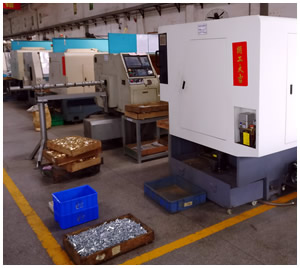With the dawning of the Bronze and Iron Age in approximately 3300 BC, the art of casting metals was born, and continues on to this day in much the same fashion as our ancestors. Though the general tools may be a bit more sophisticated, the combination of “art and science” is very much alive in the artistry of crafting hardware, as molten material is poured into a mold to create the design specific parts.
At Arte Hardware we employ both the ancient and modern methods of manufacture. Method selections depend upon the type of design, surface design texture, shape or budget. We cast and manufacture in Brass, Bronze and Iron with a number of methods.
All processes that Arte Hardware employs come with trade-offs between tooling cost, visual fidelity, lead-time and final cost. We will work with you in determining the best approach for your particular project as we are not married to any one way to manufacture with our wide array of options.
Finishing processes can range from natural living finishes to durable plated and oxidized finishes specific to your needs and matching the other finishes on your project.
Sandcasting
 Sandcasting is performed much like it was years ago with molten material carefully poured into a two-part sand mold of the desired shape or plate. Temperature, cooling time and size of the casting are all integral to creating the perfect shape. When cool, the art item is removed from the sand, hand worked, polished or tooled to final format. Sandcasting can provide good fidelity of pattern with an Olde World surface texture. The finished surface tends to be more rustic or timely in nature. Each item is an individual casting repeated over and over in process.
Sandcasting is performed much like it was years ago with molten material carefully poured into a two-part sand mold of the desired shape or plate. Temperature, cooling time and size of the casting are all integral to creating the perfect shape. When cool, the art item is removed from the sand, hand worked, polished or tooled to final format. Sandcasting can provide good fidelity of pattern with an Olde World surface texture. The finished surface tends to be more rustic or timely in nature. Each item is an individual casting repeated over and over in process.
Investment Casting
 Also referred to as “Lost Wax”, Investment Casting is a process in which unlike sandcasting with a two-part mold, the finished item mold is created around a wax image of the final product. The fully cured mold is filled with molten materials, cooled and then broken off the item releasing the finished shape to then be cleaned, machined and polished. Often used in making jewelry, investment casting can provide a higher fidelity to that of sandcasting and more importantly avoids the “part line” of a two-part mold. Again, as with sandcasting, each item is an individual casting repeated over and over in process.
Also referred to as “Lost Wax”, Investment Casting is a process in which unlike sandcasting with a two-part mold, the finished item mold is created around a wax image of the final product. The fully cured mold is filled with molten materials, cooled and then broken off the item releasing the finished shape to then be cleaned, machined and polished. Often used in making jewelry, investment casting can provide a higher fidelity to that of sandcasting and more importantly avoids the “part line” of a two-part mold. Again, as with sandcasting, each item is an individual casting repeated over and over in process.
Forging
 The forging process uses high tonnage machine pressure with heavy steel molds to “stamp” a piece of almost molten (super- heated) metal into a pattern shape in the forging tool. Forging can provide great fidelity and detail but is also a costlier tooling endeavor – often reserved for larger custom projects. The combination of tooling cost and finished item cost can often be balanced to make this a clean and effective way to achieve a great custom visual. Once the tooling is created, production moves quickly as the high tonnage stamping process is fast and repetitive – but still producing a unique custom pattern or design.
The forging process uses high tonnage machine pressure with heavy steel molds to “stamp” a piece of almost molten (super- heated) metal into a pattern shape in the forging tool. Forging can provide great fidelity and detail but is also a costlier tooling endeavor – often reserved for larger custom projects. The combination of tooling cost and finished item cost can often be balanced to make this a clean and effective way to achieve a great custom visual. Once the tooling is created, production moves quickly as the high tonnage stamping process is fast and repetitive – but still producing a unique custom pattern or design.
CNC
 CNC – Computer Numeric Control – tooling is a machining process by which the finished product is cut, carved or milled out of a static block of material. Often used in proto-typing, CNC can be an excellent method for very high quality precise and sharp detail. Contemporary sleek patterns or detail where “chasing” by a jeweler would be cost prohibitive can bring CNC into play. Depending upon the pattern detail, CNC is a fairly slow and costly process with often the same detail being closely achieved through Forging.
CNC – Computer Numeric Control – tooling is a machining process by which the finished product is cut, carved or milled out of a static block of material. Often used in proto-typing, CNC can be an excellent method for very high quality precise and sharp detail. Contemporary sleek patterns or detail where “chasing” by a jeweler would be cost prohibitive can bring CNC into play. Depending upon the pattern detail, CNC is a fairly slow and costly process with often the same detail being closely achieved through Forging.
